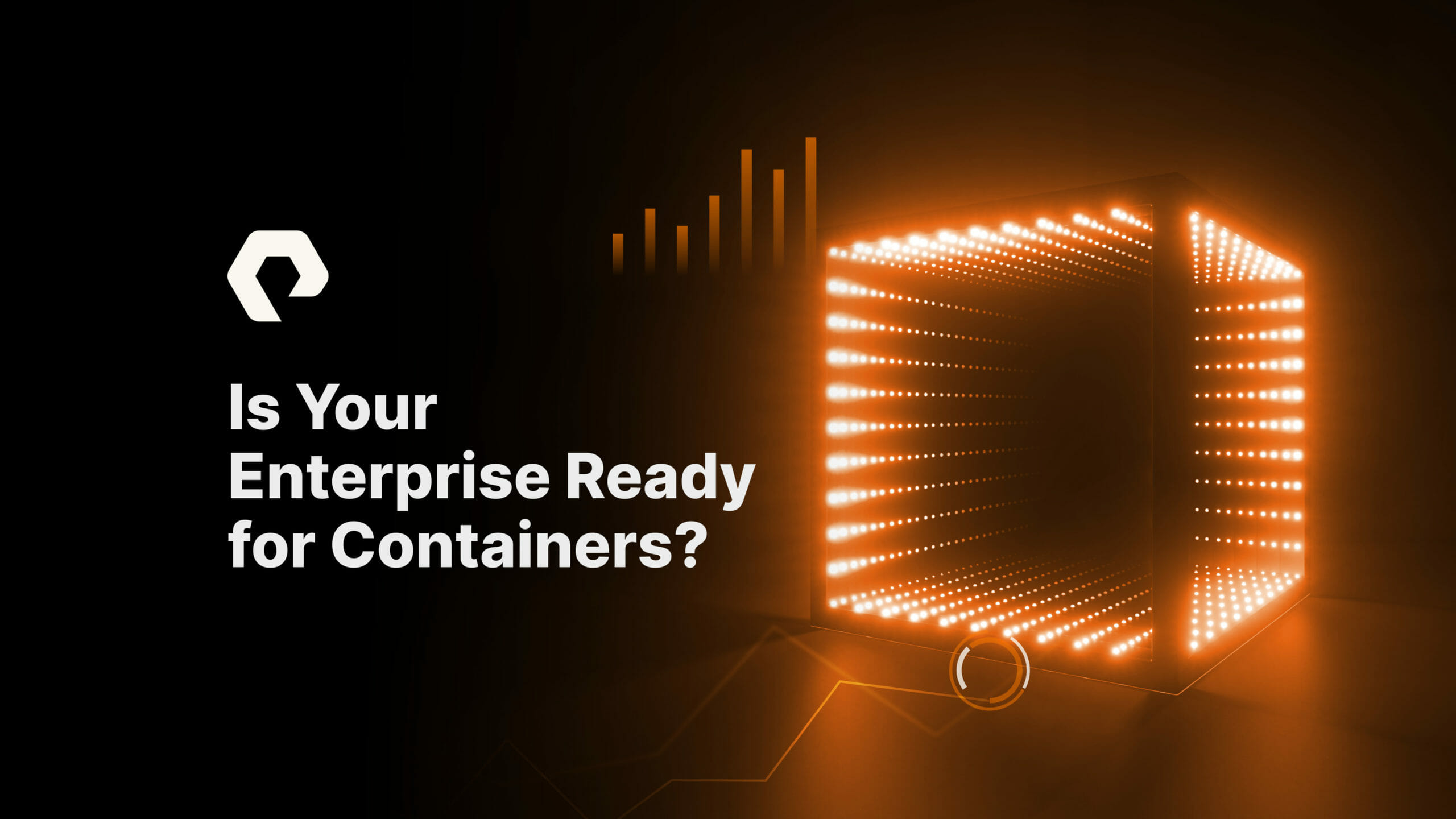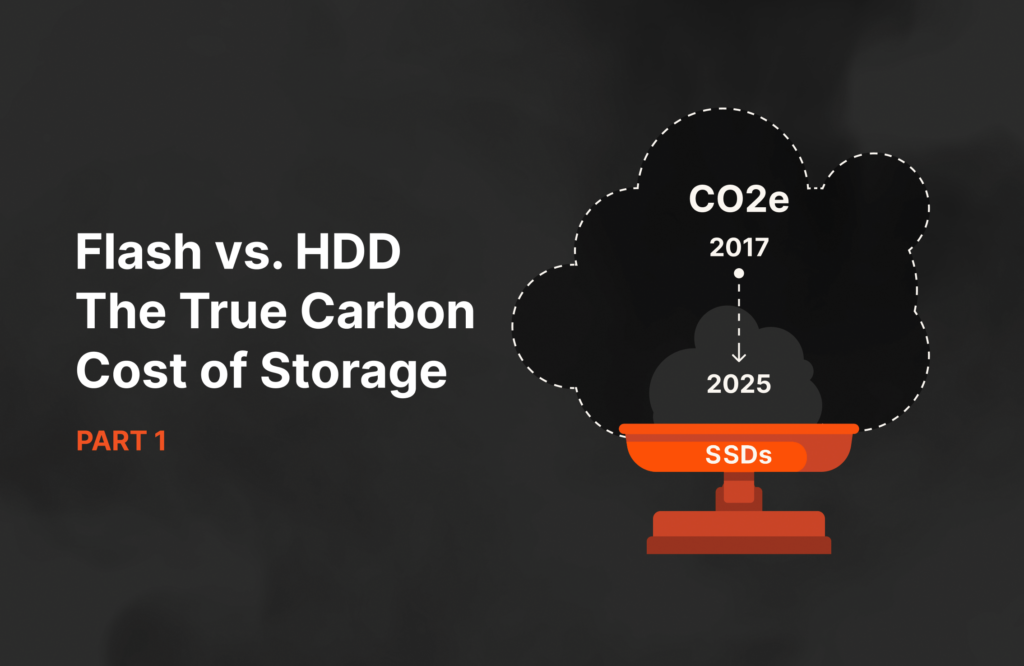Containers are inextricably linked to all things cloud—and enterprises are taking note. But how easy is adoption of these next-gen tools? Do you have the foundation you need so that your container strategy is sustainable for the long haul?
Why Enterprises Are Embracing the Container Era More than Ever
“The Kubernetes community and software are moving fast. However, enterprise IT does not typically move at the same speed, which presents both technical and cultural challenges to the adoption and effective use of cloud-native technology and methodology.” –The Rising Wave of Stateful Container Applications in the Enterprise
Containers are replacing traditional, monolithic app development with a modern development ecosystem—but what’s the draw? Efficiency and agility.
These small, individual environments sit on top of operating systems (OSs) rather than having their own. This makes them very lightweight (the opposite of the monolith) and easy to deploy across multiple platforms without issues. They have a smaller footprint than virtual machines (VMs), they’re shareable and portable, and they can be deployed and deleted in a blink.
When it comes to launching a container strategy for mission-critical, legacy workloads, consider the following to ensure you’re ready for the shift.
Do You Have the Right Skills on Your Team?
Kubernetes is one of the most in-demand IT skills, and with good reason. As you modernize your apps, modernize your IT “dream team” with the expertise of skilled IT architects who can help ensure full resiliency, optimize infrastructure footprint, handle capacity planning, and implement backup and restore measures. Be sure there’s bandwidth to improve on and adjust container-deployment strategies and processes continuously.
What Apps Do You Plan to Containerize?
Take stock of your app landscape and identify those workloads that can be optimized and improved with containers.
By design, containers weren’t meant to be persistent (or stateful), which meant stateful apps weren’t always the best fit. However, today, more than half are stateful. (Or, rather, made stateful by combining them with storage workarounds.) Native Kubernetes integrations like Portworx by Pure Storage simplify this and enable containers to consume persistent storage on-demand. This allows you to confidently deploy more traditional three-tier, stateful web apps with containers.
Will Your Data Storage be Sufficient?
Containers aren’t your average software ecosystem, which means their underlying storage can’t be either. Storage has to meet the unique demands of complex, distributed, and persistent workloads—without being a bottleneck.
Consider this: Stateless containers can be spun up and down within seconds, which means you could be dealing with thousands of containers at any given time. Kubernetes and other orchestrators provide the most effective way to manage this at scale. But storage has to be smart enough to communicate with it. Legacy storage infrastructures can’t keep up with these demands. It’s critical to have an enterprise-class storage solution that not only unifies your environments—VMs, containers, multicloud, or on-premises—but also simplifies them.
“The future belongs to storage offerings that are hybrid-cloud enablers, automated, container-aware, and highly scalable and offer rich data services for multiple workloads across heterogeneous platforms. [This] fits an era where enterprises take advantage of emerging application deployment technologies and approaches.”
– Containerizing Key Business Workloads: Evaluating the Approaches to Meet Persistent Storage Demands in Containers, IDC
Look for the following attributes when selecting storage for your container workloads:
- Is enterprise-grade. To containerize mission-critical, stateful applications, you’ll want the same performance and availability you depend on for your traditional, Tier-1 apps. All-flash solutions with rich data services can offer enterprise-level reliability, resilience, and security.
- Offers support for a heterogeneous mix of platforms. A unified interface brings familiarity and simplicity to data management and makes it DevOps- and developer-friendly.
- Provides automation. Microservice-based environments can scale fast and you’ll want fast, automated provisioning to help you manage them. You want your DevOps team to focus on using data services, not managing them.
- Supports both file and block storage. You’ll want to make sure your storage ecosystem can offer you container-specific storage offerings—whether it’s software-defined storage, specialized appliances, or block storage. In particular, block storage can be beneficial for both durability and performance of containers.
- Delivers cloud-native design. And gives you the flexibility to leverage storage consistently across hybrid environments. The beauty of containers is that they can run under different conditions, but you’ll want a storage solution that can provide an underlying compatibility with consistent data services, APIs, and as-a-service consumption.
- Has standardized integrations. The solution should integrate with container runtime engines, automation tools, and orchestration systems such as Docker and Kubernetes. Platform-native plug-ins are proving to be mature, effective workarounds for stateful container apps.
Learn how Portworx® by Pure Storage® provides a fully integrated Kubernetes data services platform that makes it easy to get persistent storage, data protection, and automated capacity management.
How Will You Manage and Orchestrate Containers?
Because it’s so easy to spin containers up and down, it’s not uncommon to have thousands of containers at any given time. Staying on top of things—and leveraging automation where you can—is critical.
To efficiently manage container storage at scale and head off “container sprawl,” an orchestrator like Kubernetes is key. Integrating Kubernetes with your storage solution allows you to manage, deploy, delete, recover, and provision containers quickly and easily.
What About Security Concerns?
In a survey of 400 IT professionals, 34% noted security wasn’t adequately addressed in their container strategies. Traditional backup tools often don’t understand key Kubernetes concepts like container-granularity, namespaces, Kubernetes configurations, backing up distributed databases, and multi-cloud operations. To help minimize risk, enterprises should employ these best practices:
- Ensure that container security is a shared responsibility, between both DevOps and ITSec.
- Protect containerized apps with Kubernetes-aware disaster recovery and backups. When you’re containerizing more traditional, business-critical workloads, be sure to have sufficient encryption, resilience, and backup and recovery measures in place.
- Implement a real-time monitoring solution with advanced log analytics so you can run a better forensic investigation of attacks. This will help you keep a closer eye on data when containers’ short life spans can make it hard to trace an attack.
Nail Your Contrainer Strategy with Portworx by Pure Storage
Container strategies are proliferating in classic IT scenarios, but many organizations have some catching up to do. To adopt containers in a way that leverages what’s beautiful about them—without toppling your stack—a solution like Portworx can help.
Portworx® Enterprise by Pure Storage® provides a fully featured enterprise storage platform for multiple production applications. It’s an integrated solution that can help with the above, including:
-
- Orchestration and management. Portworx Data Services can help by providing a complete, automated solution for easily deploying and operating a managed, production-grade data service on Kubernetes.
- Enterprise-grade security. Get high availability in and across cloud AZs and racks, point-and-click backup and restore of entire Kubernetes applications or clusters, and up to zero RPO disaster recovery. Subscribe to PX-Backup and get complete application backup to protect your clusters.
- Flexibility with your existing stack. As 100% software, Portworx runs on any infrastructure.
- Automation and support. Get 24x7x365 enterprise support and full access to documentation, forums, and step-by-step tutorials.

A Dynamic Duo
Learn more about the Pure Storage and Nutanix partnership from Pure Storage CEO Charlie Giancarlo.
Get Enterprise-grade Container Storage
Give container-native data services and data protection a spin with Portworx by Pure Storage.






